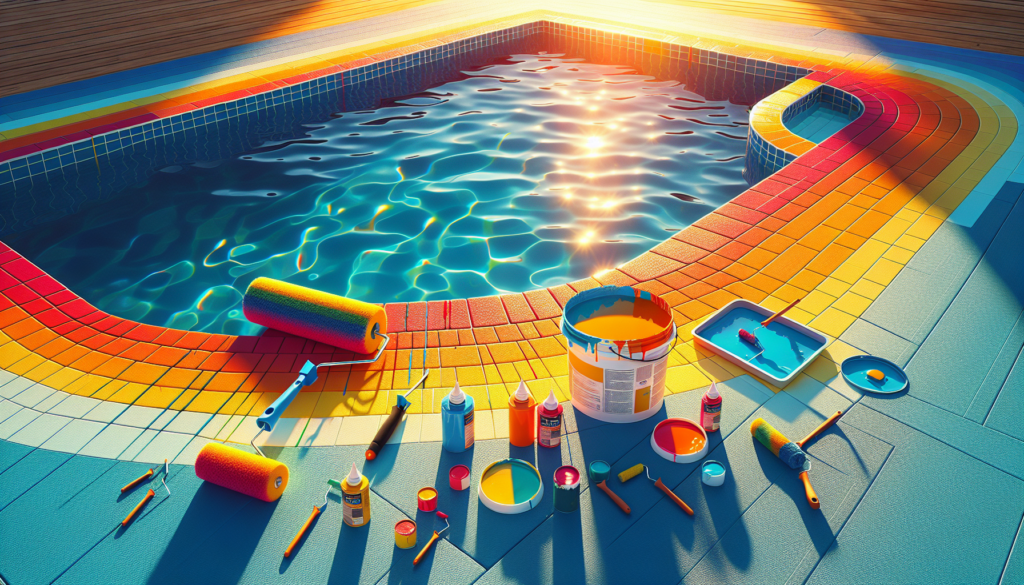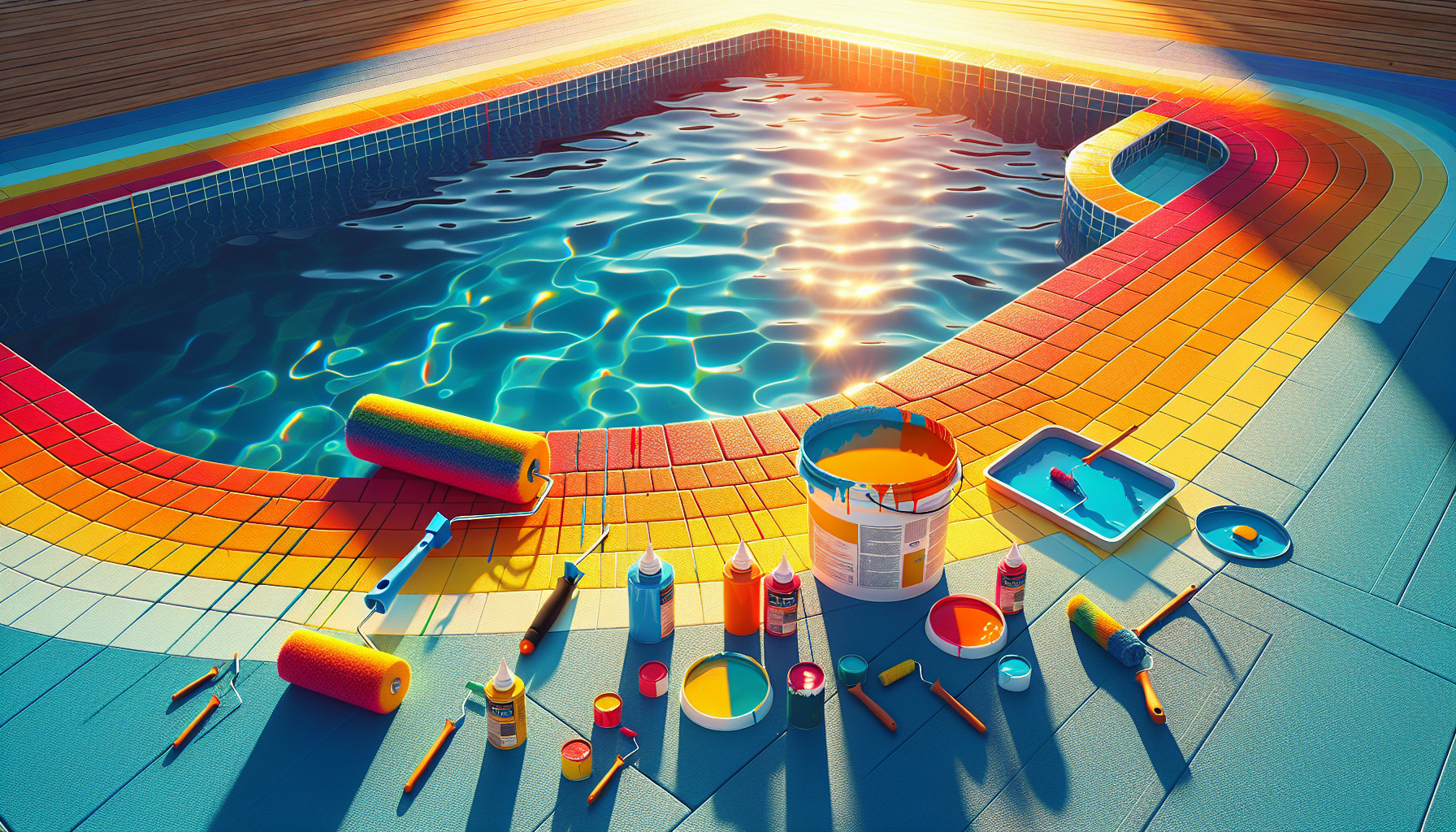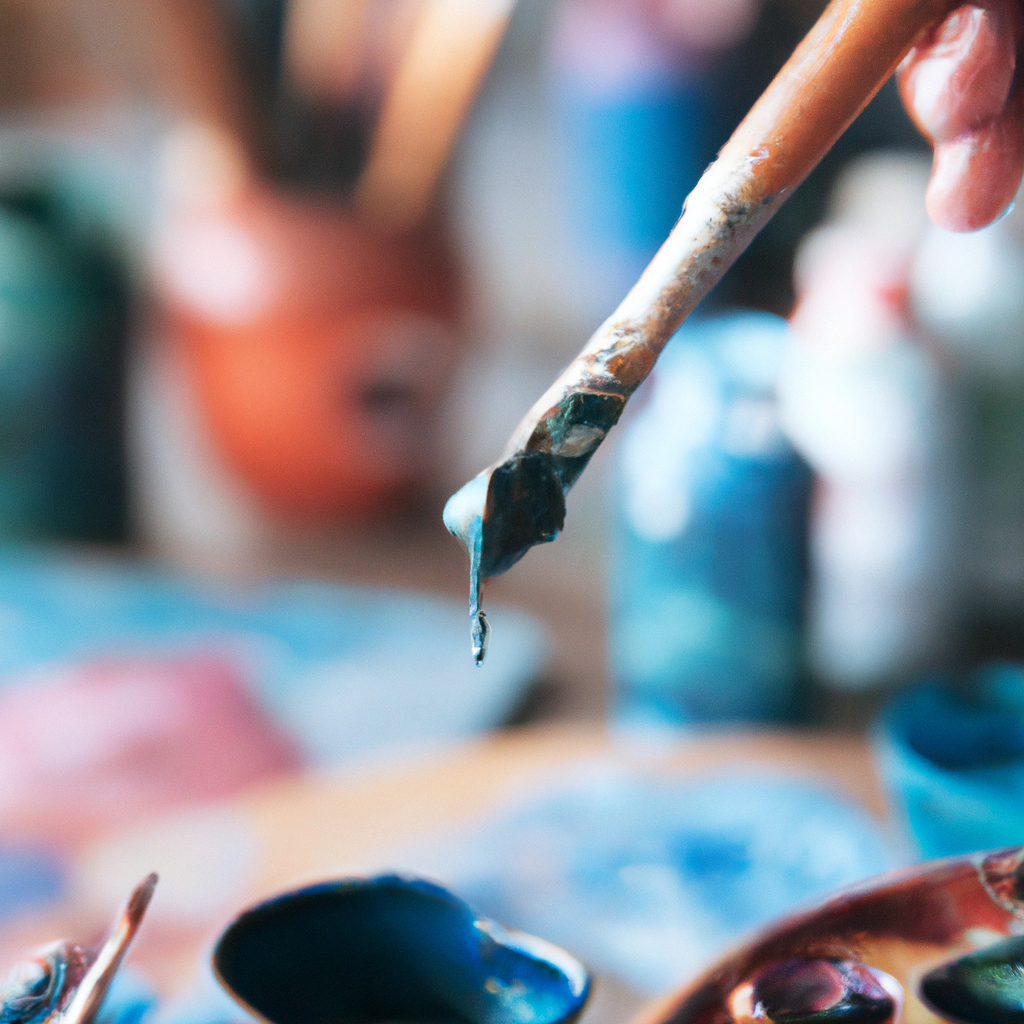As you aspire to revamp your swimming pool, one practical and cost-effective method stands tall: painting it with acrylic paint. “How To Paint A Pool With Acrylic Paint” is an expansive article, conveniently tailored to guide you systematically through the entire process. It explores the techniques, tools, and safety measures that ensure a flawless and durable finish. From the meticulous preparation of the pool surface to the careful selection of paint and an impeccable application process, this article offers you an invaluable road map to making your pool aesthetically pleasing again.
Choosing the Right Acrylic Paint
In the process of renovating your pool, the right choice of paint plays a pivotal role. It’s not just about the color or finish, but also the performance and longevity of the paint.
Determine the type of pool surface
Understanding your pool surface is the first step. The type of surface—concrete, fiberglass, plaster, or vinyl—will determine the type of acrylic paint that can be used. Consult with a pool professional or paint retailer to ensure that you choose a paint compatible with your pool surface.
Select an acrylic paint suitable for pools
Once you have determined the type of surface, it is necessary to select a paint designed specifically for pools. These paints are formulated to withstand the unique challenges a pool surface faces, such as continuous water exposure, harsh weather conditions, chemicals, and UV rays. Different brands offer various grades of acrylic paint, so make an informed decision based on quality, reviews, and your budget.
Preparing the Pool Surface
Before applying paint, it is essential to prepare the pool surface. A well-prepped surface ensures better paint adhesion and a more uniform finish.
Drain the pool
Working on a dry pool is vital, so start by draining all the water from the pool. Depending on your pool’s size, this could take several hours to a day, so plan accordingly. Also, be mindful of channeling the water properly to prevent flooding or erosion.
Clean the pool surface
Next, remove any dirt, algae, or loose existing paint from the pool surface. Use a pressure washer or a stiff brush and a pool cleaning solution for the job. This step is crucial for the new acrylic paint to adhere appropriately to the surface.
Patch any cracks or chips
Inspect the pool surface for any cracks, chips, or signs of wear. Any imperfection can affect the pool’s integrity over time and impede the paint’s durability. So, patch such areas using a pool patching compound and ensure a smooth, even surface.
Sand the pool surface
Lastly, sanding the pool surface lightly helps roughen it up for better paint adhesion.

Priming the Pool Surface
Priming is an essential step in painting your pool. Primer ensures better adhesion of paint, providing a smooth and durable finish.
Choose a primer for acrylic paint
When selecting a primer, ensure it is compatible with acrylic paint. Typically, a water-based acrylic primer would provide an excellent base for your acrylic paint.
Apply the primer to the pool surface
Application of the primer should be done evenly throughout the pool. It might take a day or two for the primer to dry completely, so consider this in your timeline.
Selecting the Appropriate Tools and Equipment
The right tools and equipment can make your painting job easier and provide a superior finish.
Choose high-quality brushes and rollers
Opt for high-quality brushes and paint rollers. Low-quality tools might not spread the paint evenly and could leave behind bristles or fibers.
Gather other necessary tools and equipment
Beyond brushes and rollers, you would need paint trays, a paint mixer, and possibly a paint sprayer depending on your pool size. Gather everything before starting to make your job more efficient.

Applying the Acrylic Paint
Now that you have prepared and primed the surface and have the right tools, it’s time to apply the acrylic paint.
Mix the acrylic paint thoroughly
Before application, mix the acrylic paint thoroughly. Make sure there are no clumps or solids, which can mar the finish.
Start painting from the deep end of the pool
This prevents you from walking over freshly painted surfaces. Work your way up, painting in small sections.
Use long, even strokes
Using long, even strokes ensures a smooth and consistent finish. This approach reduces the chance of visible brush strokes or roller marks.
Apply multiple coats if necessary
Acrylic paint is somewhat thin, and one coat may not provide adequate coverage. Allow the previous coat to dry completely before applying additional coats.
Ensuring Proper Drying and Curing
After applying the paint, it’s crucial to allow time for drying and curing for the best results.
Allow the paint to dry completely
Depending on your location’s temperature and humidity, it might take a few days for the acrylic paint to dry completely. Rushing this process could result in a poor finish.
Avoid any contact with water during the curing process
Acrylic paint is water-based and sensitive to water during the curing process. Make sure the pool remains dry throughout.
Applying a Protective Finish
An additional layer can provide better longevity for your pool paint job.
Consider applying a clear sealer or epoxy finish
A clear sealer or epoxy finish can provide better protection against UV rays and harsh pool chemicals. This might aid in the paint lasting longer and maintaining its color and gloss.
Maintaining the Painted Pool
Keeping your newly painted pool in good condition requires regular maintenance.
Regularly clean the pool to prevent dirt and debris buildup
The accumulation of dirt and debris can damage the paint over time. So, regular cleaning is important.
Avoid using harsh chemicals or abrasive cleaners on the painted surface
Overly harsh chemicals or abrasive cleaners can cause the paint to fade, tarnish, or peel off, defeating the purpose of your renovation efforts.
Inspect and touch up any damaged areas
Regular inspection allows you to identify any damage or fading early, making remedial action easier and more effective.
Long-Term Pool Maintenance Tips
Keeping your pool in excellent condition over the long term requires diligent maintenance.
Monitor water chemistry regularly
Monitoring the water chemistry is highly crucial. This impacts both the health of your pool users and the longevity of the paint.
Keep the pool properly balanced and sanitized
Imbalanced pool water can damage the paint finish and result in health issues for swimmers. Regular sanitation is also necessary to keep your pool clean and healthy.
Periodically check for any signs of fading or peeling
Regular checks help you maintain the pool’s aesthetic and practical functionality, keeping it looking great year after year.
Considering Professional Help
While a DIY project can be fulfilling and cost-effective, sometimes getting professional help has its benefits.
Evaluate the complexity of the project
If you have a large pool or a complicated design, undertaking a DIY project might be challenging. A professional pool contractor, in such cases, would save you time and bring in better results.
Engage a professional for large or intricate pool designs
If you decide on a professional, search for a reputable, experienced pool contractor who specializes in pool painting. They can guide you through the process, ensuring your pool is as aesthetically pleasing as it is durable and functional.



